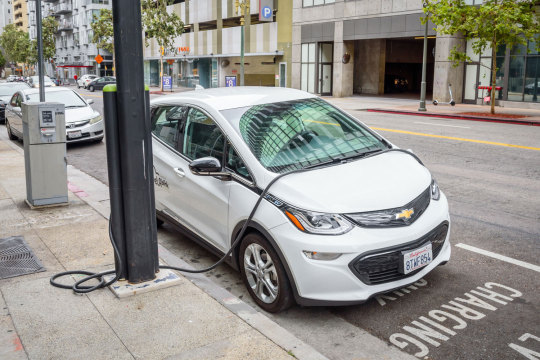#Construction Data Management
Explore tagged Tumblr posts
Text
Welcome To Twin Infra - Digtal Twin
A Digital Twin Platform to improve timeliness and reduce cost overruns in your construction projects.

Twin Infra is is a complete IT solution for the Construction/Infrastructure industry based on the concept of “Digital Twin.” The Twin Infra module is an integrated cloud platform to manage data models, people, process, and assets throughout the lifecycle of a construction project. The Twin Infra module has predictive analytic features to anticipate and forecast in all the stages of Construction/Infra. It works on public, private, and virtual cloud infrastructure and uses Artificial Intelligence for operational insights and efficiency.
Contact us
#digital twin#twininfra#Common Data Environment#Design Engineering#Building Lifecycle Management#Design Data Management#Construction Project Management#Construction Project Management software#Digital Construction Platform#Construction Data Management
2 notes
·
View notes
Text
𝗠𝗮𝘅𝘄𝗲𝗹𝗹 𝗚𝗲𝗼𝗦𝘆𝘀𝘁𝗲𝗺𝘀 𝗜𝗻𝗱𝗶𝗮 𝗥𝗲𝘄𝗮𝗿𝗱𝘀 & 𝗥𝗲𝗰𝗼𝗴𝗻𝗶𝘁𝗶𝗼𝗻 𝗖𝗲𝗿𝗲𝗺𝗼𝗻𝘆 Back in December 2024, Maxwell GeoSystems India gathered for the annual Rewards & Recognition Ceremony, an event dedicated to highlighting the outstanding contributions of our team members. Every year, this tradition shines a light on those who have gone above and beyond by demonstrating exceptional performance, innovation, and a strong dedication to their teams and the company.
0 notes
Text
Czarina-VM, study of Microsoft tech stack history. Preview 1

Write down study notes about the evolution of MS-DOS, QuickBASIC (from IBM Cassette BASIC to the last officially Microsoft QBasic or some early Visual Basic), "Batch" Command-Prompt, PowerShell, Windows editions pathing from "2.11 for 386" to Windows "ME" (upgraded from a "98 SE" build though) with Windows "3.11 for Workgroups" and the other 9X ones in-between, Xenix, Microsoft Bob with Great Greetings expansion, a personalized mockup Win8 TUI animated flex box panel board and other historical (or relatively historical, with a few ground-realism & critical takes along the way) Microsoft matters here and a couple development demos + big tech opinions about Microsoft too along that studious pathway.
( Also, don't forget to link down the interactive-use sessions with 86box, DOSbox X & VirtualBox/VMware as video when it is indeed ready )

Yay for the four large tags below, and farewell.
#youtube#technology#retro computing#maskutchew#microsoft#big tech#providing constructive criticisms of both old and new Microsoft products and offering decent ethical developer consumer solutions#MVP deliveries spyware data privacy unethical policies and bad management really strikes the whole market down from all potential LTS gains#chatGPT buyout with Bing CoPilot integrations + Windows 8 Metro dashboard crashes being more examples of corporate failings#16-bit WineVDM & 32-bit Win32s community efforts showing the working class developers do better quality maintenance than current MS does
5 notes
·
View notes
Text
How Accurate Is a Construction Cost Estimating Service Today?
Accuracy in construction cost estimating is a critical factor that directly impacts project success. With the rising complexity of modern construction projects and fluctuating market conditions, many stakeholders wonder: just how accurate is a construction cost estimating service today? This article explores the factors affecting estimating accuracy, common challenges, and how today’s technologies and best practices improve estimate reliability.
Factors Influencing Estimating Accuracy
Several elements influence the precision of a construction cost estimate:
Project Scope Definition The level of design detail strongly affects accuracy. Early-stage or conceptual estimates tend to be less precise due to limited drawings or specifications. As project plans mature, estimators can provide more detailed and reliable figures.
Data Quality and Sources Accurate cost estimating depends on up-to-date pricing data for materials, labor, and equipment. Using outdated or regionally irrelevant data can cause discrepancies. Reliable estimating services constantly update their cost databases to reflect current market rates.
Estimator Experience and Methodology Experienced estimators apply proven methodologies, industry standards, and risk assessment techniques. Their expertise in interpreting plans and anticipating challenges leads to better accuracy compared to automated or less experienced approaches.
Complexity and Project Type Simple projects with straightforward design and well-known materials are easier to estimate accurately. Complex projects—such as large commercial buildings or industrial facilities—introduce more variables that increase uncertainty.
Use of Technology Advanced estimating software and Building Information Modeling (BIM) integration help improve accuracy by automating quantity takeoffs and linking design changes directly to cost updates. This reduces manual errors and speeds up estimate revisions.
Common Accuracy Ranges
Accuracy is often expressed as a range or percentage variance from the actual project cost. Typical accuracy levels vary by estimate type and project stage:
Preliminary or conceptual estimates: ±15% to ±30%
Schematic design estimates: ±10% to ±20%
Detailed or bid estimates: ±5% to ±10%
It’s important to understand that no estimate can guarantee 100% accuracy due to unforeseen factors like weather, labor strikes, or supply chain disruptions.
How Estimating Services Improve Accuracy
Regularly updating cost databases: Reflecting current prices reduces pricing errors.
Conducting detailed quantity takeoffs: Precise measurement reduces scope gaps.
Collaborating with subcontractors and suppliers: Incorporating real bids enhances reliability.
Applying risk management contingencies: Buffers prepare budgets for uncertainties.
Leveraging technology: Automated tools reduce manual calculation mistakes.
Why Accuracy Matters
Accurate construction cost estimates contribute to better budget control, more effective bidding, and fewer costly change orders. They provide confidence to owners, contractors, and investors, enabling informed decision-making and smoother project delivery.
FAQs
What causes inaccuracies in construction cost estimates? Inaccuracies often stem from incomplete project information, outdated cost data, unexpected site conditions, and design changes during construction.
Can technology guarantee 100% accurate estimates? No technology can fully eliminate uncertainty, but it significantly improves accuracy by reducing human errors and increasing data integration.
How often should estimates be updated during a project? Estimates should be updated at key project milestones, such as after design revisions or major scope changes, to maintain accuracy.
Conclusion
While no construction cost estimating service can provide perfect accuracy, modern practices and technologies have greatly improved estimate reliability. Understanding the factors that influence accuracy helps stakeholders set realistic expectations and plan contingencies effectively. Ultimately, partnering with a skilled estimating service reduces financial risks and supports successful project outcomes.
#how accurate are construction cost estimates today#factors affecting construction estimating accuracy#technology in construction estimating services#typical accuracy range for construction estimates#how to improve accuracy of construction estimates#impact of project scope on estimate accuracy#role of estimator experience in accuracy#BIM for construction cost estimating#construction estimating errors and solutions#updating cost data for accuracy#risks in construction cost estimating#best practices for construction estimating accuracy#difference between conceptual and detailed estimates#importance of detailed quantity takeoffs#how subcontractor bids improve estimates#construction change orders and estimate accuracy#managing contingencies in construction estimates#estimating accuracy for commercial projects#challenges in industrial construction estimates#impact of design changes on cost estimates#technology tools for estimators#how often to update construction estimates#common causes of estimate inaccuracies#estimating small vs large construction projects#improving bidding accuracy with estimating#cost estimating software benefits#role of experience in construction estimating#how to reduce cost overruns with accurate estimates#using data analytics in construction estimating#what is a reliable construction cost estimate
0 notes
Text
Construction Document Collaboration Platform Enhance your team’s collaboration with Projectmates’ document-sharing platform. The software allows teams to work on documents simultaneously, leave comments, and track changes in real time. Whether it’s drawings, contracts, or RFIs, the system ensures everyone is on the same page, reducing errors and improving the decision-making process.

0 notes
Text
started back at my internship today and man i feel wildly unqualified for this
#feels like im just going on random side quests atp#like walked around with my mentor and got the “here's what's changed and what you'll do over the summer” rundown#worked on a solidworks cad model of a platform#and had a 2.5 hour long battle with microsoft project#am making good money though and it is nice to just leave and be done with work#had a really bad semester over the spring (for some reason decided 8 classes/20 credits was a good idea)#so this is a nice change of pace#will probably go grocery shopping and actually do some knitting tomorrow#i mean i do like this internship cause it's a great mix of like clerical/generic intern stuff and actual engineering skills#like one day im working on reformatting a schedule or data entry#the next im modifying a platform design for a detrasher#and the next im dealing with contractors (managing bids handling visits safety orientation and overseeing the job)#does feel really awkward like it's me the 21yo intern giving a construction crew a safety briefing and generally running all over the place#like i am not qualified for this#doing the safety/progress checks every 45 min or so like ���is it on fire? no? good.”#was asked if id be interested in a post grad job if an opening becomes available and im just like bestie i feel unqualified as an intern#ofc no matter what ill probs always feel completely unqualified and only have a 3.59 due to sheer luck and even that isn't good enough
0 notes
Text
Volunteer Vacations: Making a Difference While Exploring the World
Volunteer travel, responsible tourism, ethical volunteering Where Adventure Meets PurposeNestled on the banks of the Zambezi River in Zambia’s Mosi-oa-Tunya National Park, Thorntree River Lodge offers more than a luxurious safari escape—it’s a gateway to ethical volunteer travel. Here, the thunder of Victoria Falls harmonizes with the quiet hum of community-driven change. Volunteer vacations,…

View On WordPress
#African Bush Camps Foundation’s impact dashboard). Community-Led: Projects should be requested and managed by locals#ask: How can my skills serve this community? The answer will guide you to a trip that’s as enriching for you as it is for Zambia. Pack your#built with tourism revenue . Sustainable Construction: Collaborate with local builders on infrastructure projects#exemplifies this ethos. Since 2006#guests can participate in: Wildlife Conservation: Assist rangers in rhino tracking and data collection#healthcare#leave your ego#like Maunga Village’s school renovations . 2. Aligning Skills with Community Needs Volunteer work thrives when skills meet necessity. At Tho#not in place of them. 4. Thorntree’s Model: Volunteer Through Experience While Thorntree doesn’t offer formal volunteer programs#or sharing cultural heritage. As you plan your journey#protecting rhinos#responsible tourism#school term schedules). Don’t: Engage in Orphanage Tourism: Many facilities exploit children for profit; instead#support family reunification programs . Take Over Jobs: Work with locals#supporting anti-poaching efforts in Mosi-oa-Tunya National Park . Education Initiatives: Teach English or computer skills at Maunga Village’#the foundation has channeled $10 from every guest’s stay into education#the thunder of Victoria Falls harmonizes with the quiet hum of community-driven change. Volunteer vacations#through the African Bush Camps Foundation#Volunteer travel#when done right
0 notes
Text
#AI Factory#AI Cost Optimize#Responsible AI#AI Security#AI in Security#AI Integration Services#AI Proof of Concept#AI Pilot Deployment#AI Production Solutions#AI Innovation Services#AI Implementation Strategy#AI Workflow Automation#AI Operational Efficiency#AI Business Growth Solutions#AI Compliance Services#AI Governance Tools#Ethical AI Implementation#AI Risk Management#AI Regulatory Compliance#AI Model Security#AI Data Privacy#AI Threat Detection#AI Vulnerability Assessment#AI proof of concept tools#End-to-end AI use case platform#AI solution architecture platform#AI POC for medical imaging#AI POC for demand forecasting#Generative AI in product design#AI in construction safety monitoring
0 notes
Text
Trump’s AI Energy Strategy: A Boost for Data Centers or a Climate Setback?
The incoming Trump administration has set its sights on accelerating the growth of AI data centers, a critical driver of U.S. technological and economic competitiveness. With plans to address the power shortages hampering the industry, Trump’s energy policies could bring a mix of opportunity and controversy. The AI Blueprint: Energy Meets Expansion As AI technologies boom, the energy demands of…

View On WordPress
#climate#construction#Daniel Kaufman Real Estate#data centers#economics#Economy#energy#investing#Politics#property management#Real Estate#real estate investing#technology
0 notes
Text
#Construction Safety#BIM Technology#Common Data Environment#Construction Technology#Safety in Construction#Digital Construction#Building Information Modeling#Risk Management
0 notes
Text
AI Consulting Business in Construction: Transforming the Industry
The construction industry is experiencing a profound transformation due to the integration of artificial intelligence (AI). The AI consulting business is at the forefront of this change, guiding construction firms in optimizing operations, enhancing safety, and improving project outcomes. This article explores various applications of AI in construction, supported by examples and statistics that…
#AI Consulting Business#AI in Construction#AI Technologies#artificial intelligence#Big Data Analytics#Construction Automation#construction efficiency#construction industry#Construction Safety#construction sustainability#Data Science#Generative Design#IoT Technologies#Labor Optimization#Machine Learning#Predictive Analytics#project management#quality control#Robotics#Safety Monitoring
0 notes
Text
Transforming Construction Projects with MissionOS: The Ultimate Data Management System
Managing data in complex construction projects can be a daunting task. This is where MissionOS, an advanced Construction Data Management System, steps in to revolutionize the process. Designed for large-scale infrastructure projects, MissionOS consolidates all project data into a single platform, offering real-time access and seamless collaboration.
With features like automated reporting, GIS integration, and monitoring tools, MissionOS simplifies decision-making. Its intuitive dashboards allow stakeholders to track progress, analyze risks, and ensure compliance with project requirements. The system’s ability to integrate with IoT devices further enhances precision and reduces delays.
Whether it's tunneling, bridge construction, or asset management, MissionOS empowers teams to manage data efficiently and complete projects on time. Choose MissionOS to take control of your construction data like never before!
0 notes
Text
Study: EV charging stations boost spending at nearby businesses
New Post has been published on https://thedigitalinsider.com/study-ev-charging-stations-boost-spending-at-nearby-businesses/
Study: EV charging stations boost spending at nearby businesses


Charging stations for electric vehicles are essential for cleaning up the transportation sector. A new study by MIT researchers suggests they’re good for business, too.
The study found that, in California, opening a charging station boosted annual spending at each nearby business by an average of about $1,500 in 2019 and about $400 between January 2021 and June 2023. The spending bump amounts to thousands of extra dollars annually for nearby businesses, with the increase particularly pronounced for businesses in underresourced areas.
The study’s authors hope the research paints a more holistic picture of the benefits of EV charging stations, beyond environmental factors.
“These increases are equal to a significant chunk of the cost of installing an EV charger, and I hope this study sheds light on these economic benefits,” says lead author Yunhan Zheng MCP ’21, SM ’21, PhD ’24, a postdoc at the Singapore-MIT Alliance for Research and Technology (SMART). “The findings could also diversify the income stream for charger providers and site hosts, and lead to more informed business models for EV charging stations.”
Zheng’s co-authors on the paper, which was published today in Nature Communications, are David Keith, a senior lecturer at the MIT Sloan School of Management; Jinhua Zhao, an MIT professor of cities and transportation; and alumni Shenhao Wang MCP ’17, SM ’17, PhD ’20 and Mi Diao MCP ’06, PhD ’10.
Understanding the EV effect
Increasing the number of electric vehicle charging stations is seen as a key prerequisite for the transition to a cleaner, electrified transportation sector. As such, the 2021 U.S. Infrastructure Investment and Jobs Act committed $7.5 billion to build a national network of public electric vehicle chargers across the U.S.
But a large amount of private investment will also be needed to make charging stations ubiquitous.
“The U.S. is investing a lot in EV chargers and really encouraging EV adoption, but many EV charging providers can’t make enough money at this stage, and getting to profitability is a major challenge,” Zheng says.
EV advocates have long argued that the presence of charging stations brings economic benefits to surrounding communities, but Zheng says previous studies on their impact relied on surveys or were small-scale. Her team of collaborators wanted to make advocates’ claims more empirical.
For their study, the researchers collected data from over 4,000 charging stations in California and 140,000 businesses, relying on anonymized credit and debit card transactions to measure changes in consumer spending. The researchers used data from 2019 through June of 2023, skipping the year 2020 to minimize the impact of the pandemic.
To judge whether charging stations caused customer spending increases, the researchers compared data from businesses within 500 meters of new charging stations before and after their installation. They also analyzed transactions from similar businesses in the same time frame that weren’t near charging stations.
Supercharging nearby businesses
The researchers found that installing a charging station boosted annual spending at nearby establishments by an average of 1.4 percent in 2019 and 0.8 percent from January 2021 to June 2023.
While that might sound like a small amount per business, it amounts to thousands of dollars in overall consumer spending increases. Specifically, those percentages translate to almost $23,000 in cumulative spending increases in 2019 and about $3,400 per year from 2021 through June 2023.
Zheng says the decline in spending increases over the two time periods might be due to a saturation of EV chargers, leading to lower utilization, as well as an overall decrease in spending per business after the Covid-19 pandemic and a reduced number of businesses served by each EV charging station in the second period. Despite this decline, the annual impact of a charging station on all its surrounding businesses would still cover approximately 11.2 percent of the average infrastructure and installation cost of a standard charging station.
Through both time frames, the spending increases were highest for businesses within about a football field’s distance from the new stations. They were also significant for businesses in disadvantaged and low-income areas, as designated by California and the Justice40 Initiative.
“The positive impacts of EV charging stations on businesses are not constrained solely to some high-income neighborhoods,” Wang says. “It highlights the importance for policymakers to develop EV charging stations in marginalized areas, because they not only foster a cleaner environment, but also serve as a catalyst for enhancing economic vitality.”
Zheng believes the findings hold a lesson for charging station developers seeking to improve the profitability of their projects.
“The joint gas station and convenience store business model could also be adopted to EV charging stations,” Zheng says. “Traditionally, many gas stations are affiliated with retail store chains, which enables owners to both sell fuel and attract customers to diversify their revenue stream. EV charging providers could consider a similar approach to internalize the positive impact of EV charging stations.”
Zheng also says the findings could support the creation of new funding models for charging stations, such as multiple businesses sharing the costs of construction so they can all benefit from the added spending.
Those changes could accelerate the creation of charging networks, but Zheng cautions that further research is needed to understand how much the study’s findings can be extrapolated to other areas. She encourages other researchers to study the economic effects of charging stations and hopes future research includes states beyond California and even other countries.
“A huge number of studies have focused on retail sales effects from traditional transportation infrastructure, such as rail and subway stations, bus stops, and street configurations,” Zhao says. “This research provides evidence for an important, emerging piece of transportation infrastructure and shows a consistently positive effect on local businesses, paving the way for future research in this area.”
The research was supported, in part, by the Singapore-MIT Alliance for Research and Technology (SMART) and the Singapore National Research Foundation. Diao was partially supported by the Natural Science Foundation of Shanghai and the Fundamental Research Funds for the Central Universities of China.
#000#2023#approach#author#billion#Business#Business and management#business model#california#catalyst#challenge#charger#China#cities#communications#construction#covid#data#developers#economic#Economics#effects#electric vehicles#electricity#energy#Environment#Environmental#EV#Foundation#fuel
0 notes
Text
Bridging Smart City Visions and Budgets with a Construction Cost Estimating Service
As cities worldwide shift toward smarter, more sustainable development, the idea of a "smart city" has moved from aspiration to implementation. These urban environments are designed to leverage data, technology, and intelligent infrastructure to improve livability and efficiency. However, turning smart city concepts into real, functional spaces requires more than innovation—it requires precise financial planning. A construction cost estimating service plays a critical role in aligning bold urban visions with practical, achievable budgets.
Understanding the Smart City Framework
Smart cities are built on interconnected systems that include digital infrastructure, energy-efficient buildings, intelligent transportation, and real-time public services. Examples include sensor-based lighting, integrated data platforms, automated waste management, and green infrastructure.
Each element has financial implications, from high-tech installations to long-term maintenance. Cost estimating services help translate these visionary features into actionable plans by forecasting expenses across the project lifecycle.
Challenges of Budgeting for Smart Cities
Smart city projects pose several budgeting challenges:
Technology evolution: Rapid innovation can make systems obsolete mid-project.
Cross-sector integration: Combining infrastructure, software, and construction raises cost complexity.
Data infrastructure: Building digital backbones adds another layer of cost beyond traditional construction.
Long-term sustainability goals: Energy systems and green design often involve higher initial investment.
These challenges make it essential to include experienced cost estimators early in the planning process to anticipate and manage financial complexity.
Benefits of a Construction Cost Estimating Service in Smart City Projects
Translating Vision into Numbers
Convert abstract smart city features into quantifiable line items.
Include software, hardware, and systems integration costs.
Map budgets to both current needs and future scalability.
Balancing Innovation with Cost
Assess value versus cost for smart features like IoT devices or automated systems.
Identify areas where innovation yields the highest return.
Prevent overinvestment in tech that doesn't improve efficiency or performance.
Integrating Infrastructure and Digital Layers
Estimate costs for physical and digital components together.
Include broadband, sensor networks, and control centers in construction budgets.
Forecast long-term operational costs such as data storage, upgrades, and monitoring.
Scenario Modeling for Smart Alternatives
Compare options like smart HVAC vs. conventional systems.
Evaluate solar energy integration versus grid reliance.
Analyze smart parking systems against traditional parking infrastructure.
Creating Adaptable Budgets
Smart cities evolve constantly. What’s innovative today may need updating tomorrow. A construction cost estimating service develops flexible budgets that adapt to:
Phased implementations
Future technology upgrades
Changing regulations or codes
Shifting funding sources
This adaptive budgeting ensures that smart city initiatives stay on course—even in a changing environment.
Collaborating Across Stakeholders
Smart city developments involve a mix of partners:
Government agencies
Private tech firms
Utility companies
Community stakeholders
Cost estimators provide a unified financial picture that all stakeholders can understand. This helps build consensus and trust, especially when projects are funded by public-private partnerships.
Risk Management in Smart Infrastructure
The technical complexity of smart cities increases financial risk. A single system failure could disrupt multiple services. Cost estimators manage these risks by:
Including redundancy costs for critical systems
Building in cybersecurity considerations
Accounting for maintenance, system support, and service contracts
This forward-thinking approach supports not just the build-out of smart infrastructure, but its sustainable performance.
Cost Planning for Sustainable Smart Design
Sustainability is a pillar of smart cities, encompassing:
Energy-efficient building design
Renewable energy integration
Low-impact materials and construction
Green transportation systems
Estimating services align sustainability goals with realistic budgets by:
Forecasting ROI for sustainable features
Incorporating incentives, rebates, and tax credits
Calculating lifecycle cost savings versus upfront spending
Linking Digital Twin Technology with Budget Planning
An emerging tool in smart cities is the "digital twin"—a real-time virtual model of the physical city. These systems help manage infrastructure more efficiently but come at a significant cost.
Cost estimators help:
Quantify the setup and operational cost of digital twins
Align them with existing construction and infrastructure budgets
Model upgrade paths and maintenance needs
This integration ensures the technology’s benefits are achieved without undermining financial feasibility.
Planning for Scalability and Future Growth
Smart cities are designed to grow. Estimators help projects prepare for future demands by:
Including scalable systems in original budgets
Creating allowances for future construction phases
Modeling per-capita infrastructure costs based on projected growth
This long-term outlook prevents underinvestment and supports urban resilience.
Conclusion
Smart cities represent the future of urban living—data-driven, energy-efficient, and responsive to the needs of their populations. But without detailed financial planning, these projects risk becoming too expensive, overly complex, or disconnected from reality.
A construction cost estimating service brings structure and clarity to the process. By accurately forecasting the cost of innovation, integration, and long-term performance, it enables urban planners, engineers, and policymakers to turn smart city concepts into budget-aligned action. In a world where cities must be both intelligent and sustainable, the foundation of success begins with smart estimating.
#smart city#cost estimating#budgeting#urban planning#digital infrastructure#IoT construction#energy efficiency#green building#public-private#lifecycle cost#sustainable urbanism#infrastructure cost#data networks#smart HVAC#digital twins#city design#modular systems#cost forecasting#stakeholder alignment#smart mobility#green infrastructure#urban innovation#adaptive budgets#risk management#maintenance cost#cost modeling#urban resilience#construction pricing#funding strategies#scalable systems
0 notes
Text

The Most Realistic Architectural Visualization Tool on the Market.
Twinmotion can import your data in a matter of minutes, with no detail loss. Once linked, you can continue to refine in your design software before sending those changes to Twinmotion with a single click.It comes with 10,000 high-quality smart assets, which can be dragged and dropped into your scene. The large library of manmade and natural physically based materials – everything from trees growth, doors opening, people movement, cobblestones and non-slip flooring, to water, sand, and mud - it's easy to get the look you want.
#Twinmotion#Twinmotion for Revit#Twinmotion revit#PDM product data management#AEC Collection#Autocad electrical#Autodesk Assemble#BIM Collaborate Pro#Autodesk Build#Autodesk Construction Cloud#Autodesk Docs#Autodesk software#Autodesk Takeoff#Inventor#Autodesk Inventor#Autodesk Support
0 notes
Text

For large-scale infrastructure projects, Projectmates offers a comprehensive capital project planning and management solution. Align your project goals with financial resources, optimize planning, and ensure execution with precision. From initial planning to project completion, the software helps manage the entire lifecycle while staying within budget and meeting operational goals.
0 notes